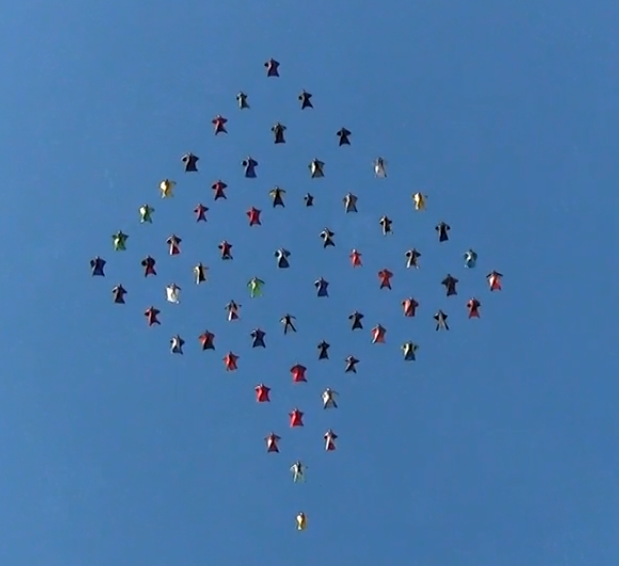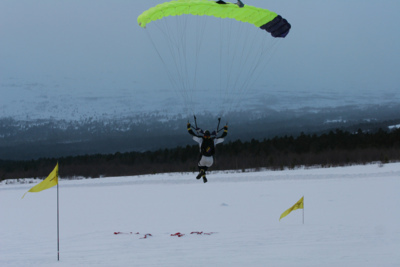QuoteQuote
Heat is not a big factor in nylon degradation (at least compared to UV.)
Unless that heat is from a hot knife that a canopy was accidently dropped on, been there done that!Mick.
Do you remember the name of the guy that browed Fisby's hot knife to cut crossports in his Unit and crossported the top skin?
No, I don't but I know he wasn't the only one to do that!! Many people just didn't understand that flat packing a canopy didn't mean all the cell walls just magicly aligned themselves when laid out for packing. Big oops- cross porting through the cell walls, top skin amd bottom skin at the same time, TFB but that's how we learn in't it?
Mick.
QuoteTFB but that's how we learn in't it?
It sure is, but the smart ones learn from other people's mistakes. Its cheaper and hurts less.
QuoteQuoteTFB but that's how we learn in't it?
It sure is, but the smart ones learn from other people's mistakes. Its cheaper and hurts less.
Got that right!
Mick.
I used to work for a Textile Dyeing plant many, many, moons ago.
As far as natural material (white) vs. Dyed material, the dyed material will have more volume and weight.
Hence, more pack volume.
Also darker pigments will tend to have more weight than lighter colors.
The same principal applies to paint.
Fluorescent colors do degrade faster than other darker colors.
If you happen to have or run across a canopy from the early '90's that has a multitude of these type colors, try pull testing the different ones.
The fluoresecent ones (lighter colored) will fail at a lesser pull force that say darker colors.
Dark colors refract (turn away) some of the UV rays. This generates heat. This also why dark colored cars is warmer to the touch than say a white car.
A far as the "more silicone" issue; never heard that one!
BS,
MEL
www.Skyworksparachuteservice.com
kallend 2,027
Quote
Do you remember the name of the guy that browed Fisby's hot knife to cut crossports in his Unit and crossported the top skin?
That must have been painful.
The only sure way to survive a canopy collision is not to have one.
iGGy 0
QuoteDark colors refract (turn away) some of the UV rays. This generates heat.
Why would this generate heat? Reflection prevents any energy from being absorbed?
QuoteThis also why dark colored cars is warmer to the touch than say a white car.
No. Dark cars are warmer because they absorb more light (thats why it's dark). The absorbed light energy turns into heat energy.
(Wherever the incoming light is UV or not is irrelevant.)
QuoteDyed material, the dyed material will have more volume and weight.
Hence, more pack volume.
And this can be measured in a sample as small as a 150 sq. ft. canopy? Outside of theory or the lab this is an urban myth that has been around since at least the early 70’s. I have seen jumpers order "white" reserves beliving it will make their rig smaller.
QuoteIf you happen to have or run across a canopy from the early '90's that has a multitude of these type colors, try pull testing the different ones.
The fluoresecent ones (lighter colored) will fail at a lesser pull force that say darker colors.
I have jumped florescent colored canopies (orange) since 1976 and have not found this to be true. While they do fade faster the integrity of the material does not seem to degrade any faster then the other colors in the canopy. Of course this was only a sample of 20+ canopies over a thirty year period so the conclusions might be skewed.
QuoteDark colors refract (turn away) some of the UV rays. This generates heat. This also why dark colored cars is warmer to the touch than say a white car.
When I was in school I was taught that dark colors absorb heat thus making the white car cooler. This is the first I have heard of dark colors generating heat by turning away the rays of the sun.
QuoteQuote
Do you remember the name of the guy that browed Fisby's hot knife to cut crossports in his Unit and crossported the top skin?
That must have been painful.
Must have been, he cried for a week.
--------------------------------------------------------------------------------
Dark colors refract (turn away) some of the UV rays. This generates heat.
--------------------------------------------------------------------------------
Why would this generate heat? Reflection prevents any energy from being absorbed?
--------------------------------------------------------------------------------
Quote
--------------------------------------------------------------------------------
This also why dark colored cars is warmer to the touch than say a white car.
--------------------------------------------------------------------------------
No. Dark cars are warmer because they absorb more light (thats why it's dark). The absorbed light energy turns into heat energy.
(Wherever the incoming light is UV or not is irrelevant.)
You are absolutely correct!
BS,
MEL
www.Skyworksparachuteservice.com
Quote
In Reply To
--------------------------------------------------------------------------------
Dyed material, the dyed material will have more volume and weight.
Hence, more pack volume.
--------------------------------------------------------------------------------
And this can be measured in a sample as small as a 150 sq. ft. canopy? Outside of theory or the lab this is an urban myth that has been around since at least the early 70’s. I have seen jumpers order "white" reserves beliving it will make their rig smaller.
No Myth..simple fact!
Quote
In Reply To
--------------------------------------------------------------------------------
If you happen to have or run across a canopy from the early '90's that has a multitude of these type colors, try pull testing the different ones.
The fluoresecent ones (lighter colored) will fail at a lesser pull force that say darker colors.
--------------------------------------------------------------------------------
I have jumped florescent colored canopies (orange) since 1976 and have not found this to be true. While they do fade faster the integrity of the material does not seem to degrade any faster then the other colors in the canopy. Of course this was only a sample of 20+ canopies over a thirty year period so the conclusions might be skewed.
I have repaired about as many canopies as half the number of days you've been jumping.
It is my findings with the above statement along with serveral other manufacturer's findings,that certain fluorescent colors and silver have a shorter lifespan.
MEL
www.Skyworksparachuteservice.com
QuoteI have repaired about as many canopies as half the number of days you've been jumping.
You have repaired 5500 canopies?
If it took about an hour to do each repair that would mean you have spent around 230 days repairing canopies.
QuoteNo Myth..simple fact!
And this can be measured in a sample as small as a 150 sq. ft.
SlashDog 0
Maybe it's more!
Remember I worked on several hundred just with the Crossfire SB....
MEL
www.Skyworksparachuteservice.com
QuoteSparky,
Maybe it's more!
Remember I worked on several hundred just with the Crossfire SB....
MEL
There were only 440 canopies total affected by SB #20011025 and you say worked on several hundred of those?
That’s still a long was from 5,500 canopies repaired. That comes out to around 340 repairs a year for every year you have been in the sport. But I will go along with what ever you say.
About the color in a canopy, I'll ask again.
"And this can be measured in a sample as small as a 150 sq. ft. ?"
I do not think it could be measured in a canopy of 300 sq. ft. But of course that's just my opinion.
bob.dino 1
QuoteQuoteRemember I worked on several hundred just with the Crossfire SB....
There were only 440 canopies total affected by SB #20011025 and you say worked on several hundred of those?
Well, he does run the North American Icarus Service Centre...






Unless that heat is from a hot knife that a canopy was accidently dropped on, been there done that!
Do you remember the name of the guy that browed Fisby's hot knife to cut crossports in his Unit and crossported the top skin?